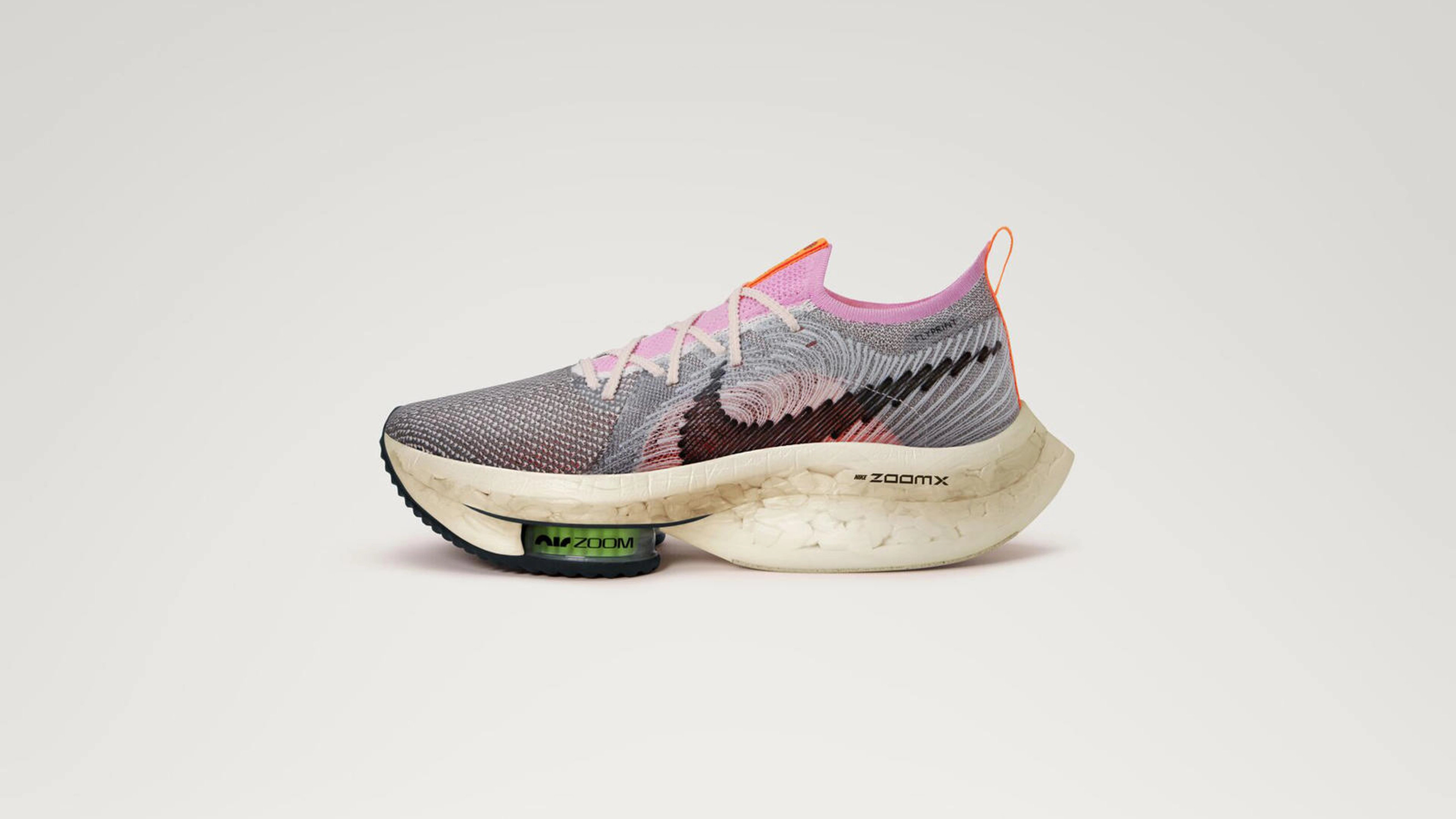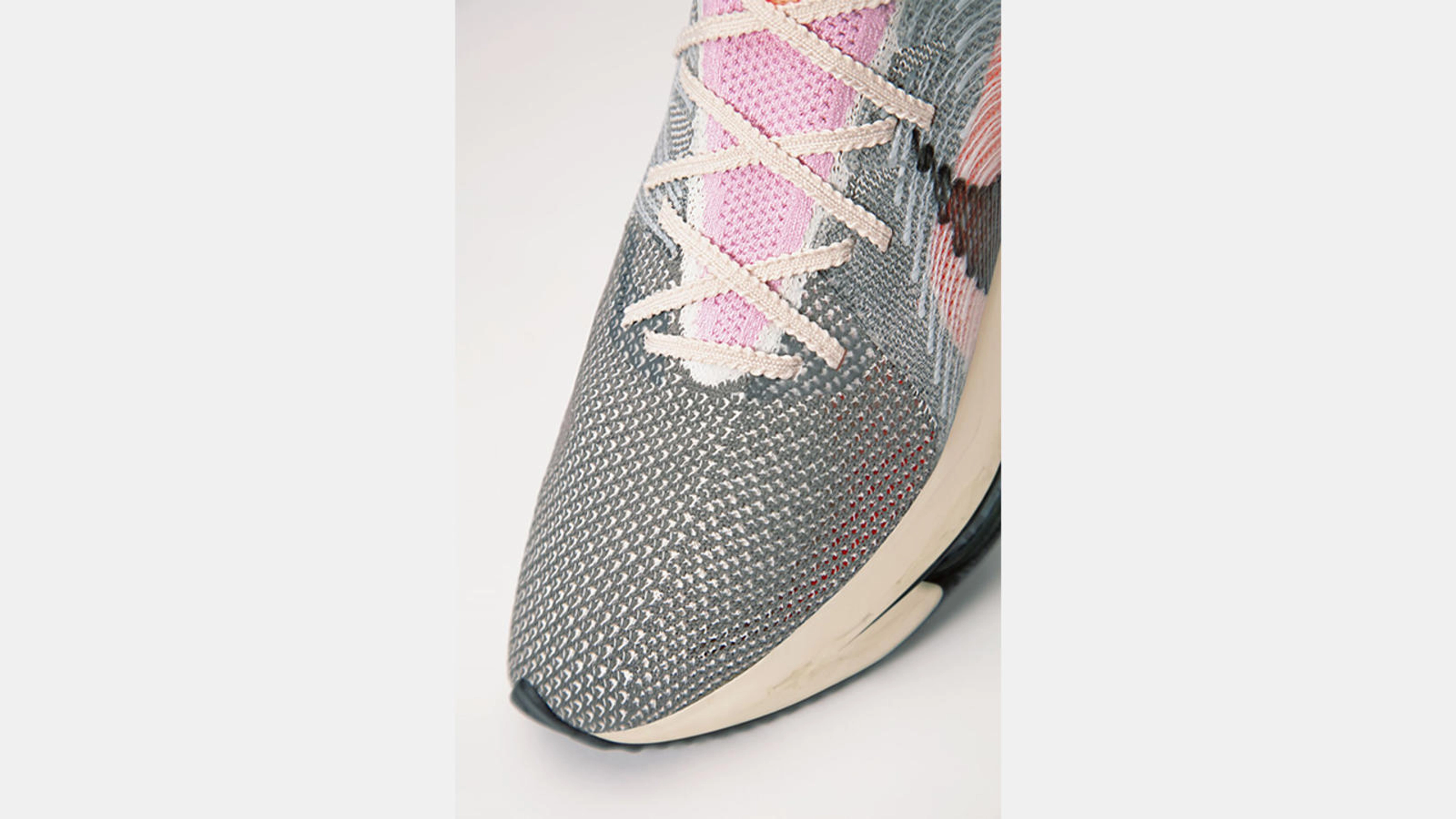Nike's Most Sustainably-Minded Performance Shoe Yet
- September 13, 2021
What to know
- The Nike Air Zoom Alphafly Next Nature is made of at least 50 percent total recycled content by weight.
- By asking new questions around pattern efficiency, the recycling of scrap material, and the re-engineering of existing materials, the Nike Air Zoom Alphafly Next Nature is a key chapter in NIKE, Inc.'s Move To Zero journey.
- The Nike Air Zoom Alphafly Next Nature presents the opportunity for Nike to continue scaling its sustainability efforts across its running line.
The Nike Air Zoom Alphafly Next Nature takes Nike’s most elite performance shoe and recreates it with circular design principles. It is Nike’s most sustainably-minded performance shoe to date.
Following Nike Basketball’s Cosmic Unity, Nike Running designers were driven by a core belief within the Move to Zero initiative—Nike’s journey toward zero carbon and zero waste—that a product that makes the world better can also make an athlete better. Cosmic Unity set the bar with 25 percent total recycled content by weight; the Alphafly Next Nature advanced it by reaching at least 50 percent total recycled content by weight, making it Nike’s boldest move yet in merging sustainability and performance. Doing so with the crown jewel of racing footwear was an important symbolic choice.
“We don’t want to be about making shiny objects—we wanted to set our concept car as the intent for how we think about performance and sustainability,” says Rachel Bull, Senior Footwear Product Director for Nike Running. “Putting a sustainable focus on our fastest marathon shoe also means we need all hands on deck for it to work, from our teams in design to material sourcing to manufacturing.”
The design of the AlphaFly Next Nature arrives at new answers by considering new questions: What are creative ways to select different materials or processes for the shoe’s performance elements? Can leftover or recycled versions of those pinnacle features be made while maintaining their elite properties?
Those kinds of questions required fluid conversation between engineers, developers and manufacturers to create a shoe that performed in real life. That work translated into hitting meaningful numbers in sustainability for some of the shoe’s most important performance elements. Take the Nike ZoomX midsole, which was made with at least 70 percent recycled materials by weight. Bull attributes a big part of the magic of Nike racing shoes to the ZoomX foam, reaching back to Eliud Kipchoge’s daring quest to break the 2-hour marathon barrier. If any of it is going to waste, she says, it’s a huge loss for the people who would potentially wear those shoes on race day. One solution: put the leftover recycled foam from the midsole back into the sock liner. Redeem a part of the shoe that symbolizes so much potential for the body.
This use-everything strategy got the teams thinking across disciplines and considering how other parts of the shoe could utilize waste. For example, the forefoot Zoom Air pods in the Nike Running racing line naturally consist of a high percentage of recycled content. The Alphafly Next Nature leveled this concept up and used leftover waste from Nike airbag production in the 3D-printing process that creates the textile for the hybrid Nike Flyprint and Nike Flyknit upper.
Created inside the NEXT% system, the original Alphafly NEXT% is the summation of many components working together. The design principles guiding Move to Zero are no different; every shoe fits within a larger pursuit of progress, as the insights derived from one shoe guide the next shoe forward in reducing its impact on the planet. According to Bull, the Alphafly Next Nature offers another jumping-off point, and a unique opportunity for Nike to continue scaling its sustainability efforts across its running line.
“The exciting thing about pushing performance and sustainability forward with the Alphafly Next Nature is that we know if we can do it with our most pinnacle performance product, then so much is validated to bring that technology into the rest of the line,” says Bull.
The Nike Air Zoom Alphafly Next Nature releases globally throughout fall 2021 to Nike Members and is also available at select retailers.
To download high-res images, click here.


